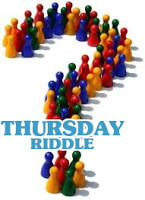So that the following plan can be followed, let us number the coins from 1 to 12. For the first weighing let us put on the left pan coins 1,2,3,4 and on the right pan coins 5,6,7,8.
There are two possibilities. Either they balance, or they don't. If they balance, then the different coin is in the group 9,10,11,12. So for our second one possibility is to weigh 9,10,11 against 1,2,3
(1) They balance, in which case you know 12 is the different coin, and you just weigh it against any other to determine whether it is heavy or light.
(2) 9,10,11 is heavy. In this case, you know that the different coin is 9, 10, or 11, and that that coin is heavy. Simply weigh 9 against 10; if they balance, 11 is the heavy coin. If not, the heavier one is the heavy coin.
(3) 9,10,11 is light. Proceed as in the step above, but the coin you're looking for is the light one.
That was the easy part.
What if the first weighing 1,2,3,4 vs 5,6,7,8 does not balance? Then any one of these coins could be the different coin. Now, in order to proceed, we must keep track of which side is heavy for each of the following weighings.
Suppose that 5,6,7,8 is the heavy side. We now weigh 1,5,6 against 2,7,8. If they balance, then the different coin is either 3 or 4. Weigh 4 against 9, a known good coin. If they balance then the different coin is 3, otherwise it is 4. The direction of the tilts can tell us whwther the offending coin is heavier or lighter.
Now, if 1,5,6 vs 2,7,8 does not balance, and 2,7,8 is the heavy side, then either 7 or 8 is a different, heavy coin, or 1 is a different, light coin.
For the third weighing, weigh 7 against 8. Whichever side is heavy is the different coin. If they balance, then 1 is the different coin. Should the weighing of 1,5, 6 vs 2,7,8 show 1,5,6 to be the heavy side, then either 5 or 6 is a different heavy coin or 2 is a light different coin. Weigh 5 against 6. The heavier one is the different coin. If they balance, then 2 is a different light coin.




